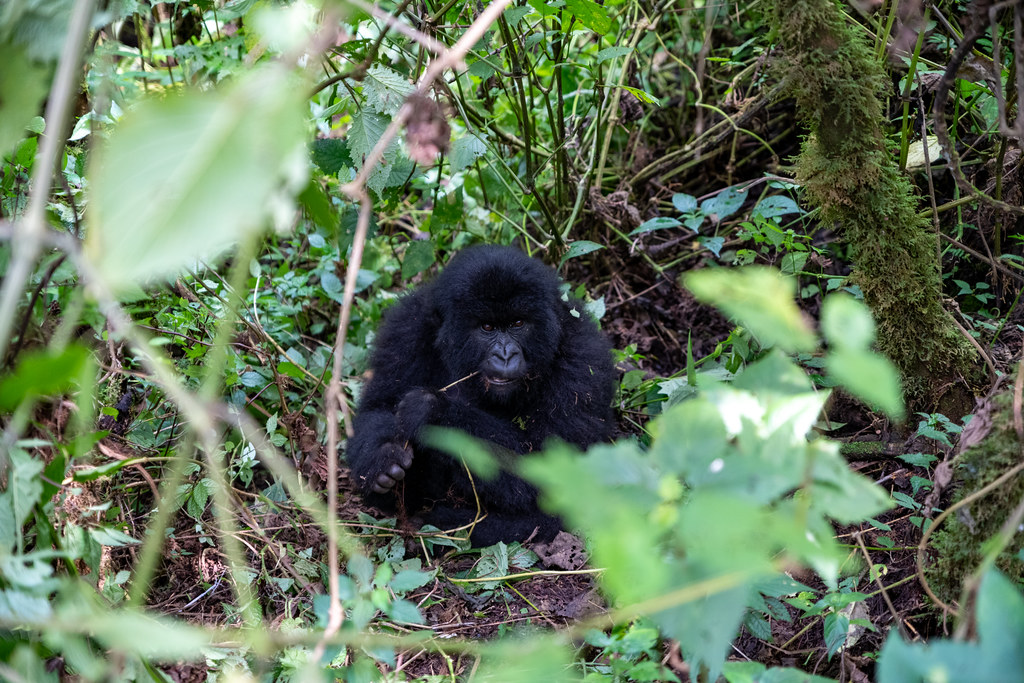The Journey of Gorillas Transforming into Silverbacks
Silverback gorilla weight — Silverback gorilla height — Silverback gorilla strength — Silverback gorilla size — Silverback gorilla habitat — How tall is a silverback gorilla on two feet
Only male gorillas transform into silverbacks as they grow older; not every gorilla follows this path. The female gorillas and young males lack the silver hair on their backs, which means they cannot be referred to as silverbacks.
The mature male gorillas that have yet to grow their distinctive silver hair are referred to as blackbacks until they attain that characteristic patch. Only then can they truly earn the title of silverbacks.
Experience the thrill of encountering them while embarking on gorilla trekking safaris in Uganda, Rwanda, or DR Congo.
Silverback gorillas earn their name due to the striking saddle-shaped patch of silver hair that appears on their backs upon reaching sexual maturity, typically around the age of 12 years. The grey hair serves as a signal to fellow gorillas, showcasing their status as mature males.
Silverbacks are recognized as the most hirsute among all gorilla species. They are quite impressive in size, reaching heights of 5.5 to 6 feet when they stand tall.
A fully grown silverback can tip the scales at around 350 pounds, sporting a prominent bony crest atop their skulls and backs, which lends their heads a distinctive conical appearance.
Silverbacks take on the vital role of safeguarding their group, ensuring protection from any lurking threats. The silverback leads the way, choosing the best spots to find food, selecting cozy places to rest, and guiding the family’s daily journey through the wild.
The leading male in the family holds the exclusive right to mate with all the females in the group, who select him based on his impressive size and strength.
The young males often venture away from the group, embarking on a journey as solitary figures for a while, until they establish their own families. Alternatively, they might engage in a fierce battle with the dominant silverback to seize control of the group.
When a silverback gorilla meets an unexpected end, the next mature male steps up to assume the leadership of the group.
If a lone silverback finds itself without companions, the group will scatter unless another solitary silverback arrives to assume the role of leader. The new silverback occasionally eliminates all the other male infants of the previous silverback to prevent any future threats as they mature.
A silverback from within the group may rise to challenge the dominant silverback, often leading to an intense confrontation that can result in the older silverback departing from the group or the emerging silverback being cast out by their peers.
In summary, only male gorillas transform into silverbacks, typically around the age of 12 years.

